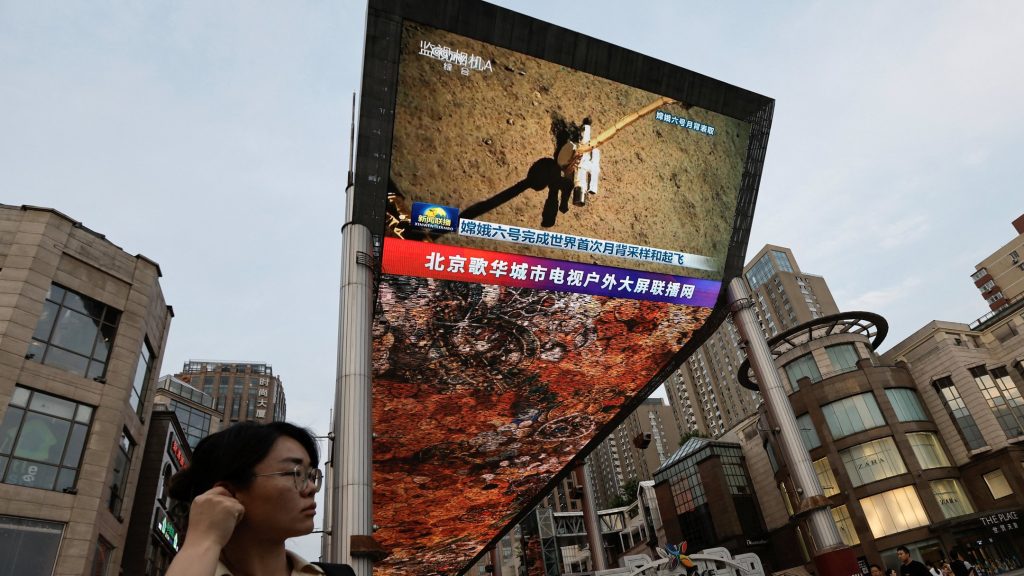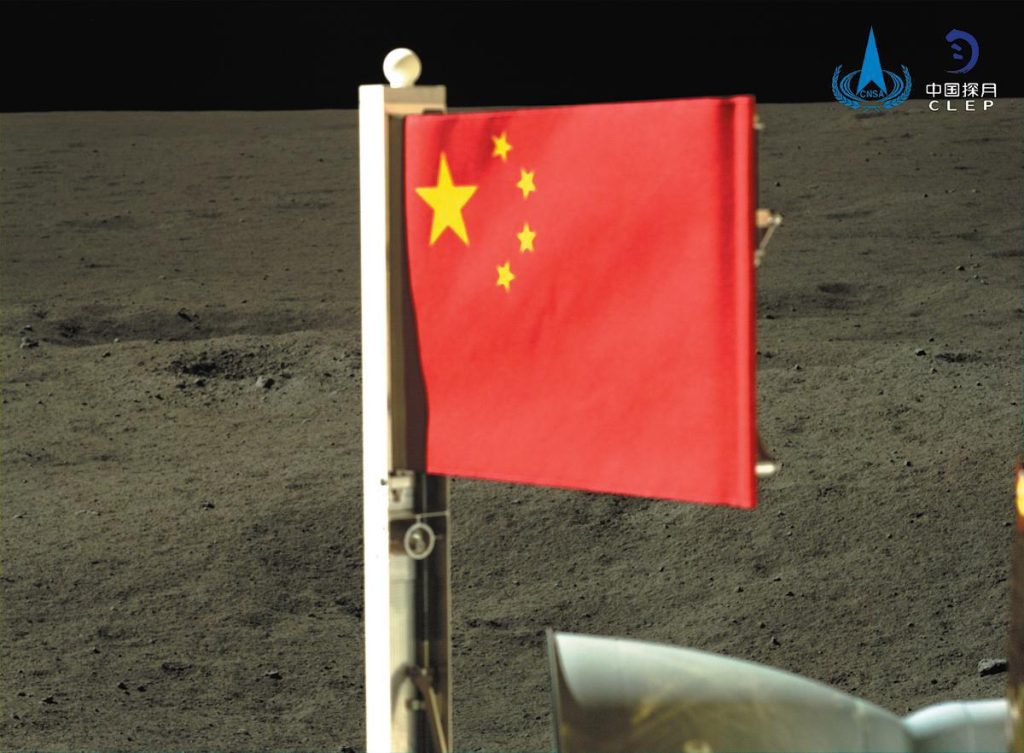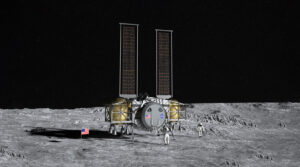[Updated] Chang’e-6 Returned To Earth With Samples From The Far Side Of The Moon
10th Jun 2024![[Updated] Chang’e-6 Returned To Earth With Samples From The Far Side Of The Moon [Updated] Chang’e-6 Returned To Earth With Samples From The Far Side Of The Moon](https://orbitaltoday.com/wp-content/uploads/2024/06/Change-6-spacecraft.jpeg)
China’s autonomous Chang’e 6 lunar mission spacecraft delivered lunar samples collected on the far side into near-lunar orbit last Thursday. After the lander successfully docked with its orbiter, the sample container was moved to the spacecraft. The spacecraft will return to Earth on 25 June.
Chang’e-6 Mission Returns To Earth
Updated on 26th June

On Tuesday, 25th June, the Chang’e-6 mission has returned to Earth with the first-ever samples from the far side of the Moon. The re-entry module successfully landed in China’s northern Inner Mongolia region around 2:00 p.m. local time. During the live broadcast, the module was seen landing on a parachute.
The Chang’e-6 probe collected lunar dust and rocks weighing up to 2 kilograms from the far side of the Moon. First, researchers in China will analyze the samples, and then international scientists will have access to them.
China’s 6th lunar expedition
We reported the launch of ‘Chang’e-6’ on 3 May this year from the Wenchang launch site in Hainan Province on board a heavy launch vehicle ‘Changzheng-5’. On 8 May, the spacecraft entered lunar orbit.
Last Sunday, 2 June, a bundle of the lander and the ascender successfully made a soft touchdown with the surface of our natural satellite at a pre-designated landing zone, the unexplored Apollo Basin crater, which is in the larger South Pole-Aitken (SPA) basin on the back side of the Moon.
The next two days of the mission were spent on grab samples, with a mechanical arm collecting samples on the surface and a special drill extracting rock samples from below the subsurface. In addition, several scientific instruments were deployed to conduct on-site tests and analyses.
This mission is the sixth in the Chang’e lunar exploration program, which is named after the Chinese moon goddess. It is China’s second project to return lunar samples to Earth. The previous Chang’e-5 mission did so from the near side of the Moon in 2020.
The country’s plans include two more such missions, landing astronauts on the Moon by 2030 and building a research base at its south pole, in a region believed to contain water ice.
Chang’e 6 probe’s samples enter the return-to-Earth module in lunar orbit
Some minor difficulties occurred in orbit, as the spacecraft was about 50 kilometers ahead and 10 kilometers above the orbiter-return capsule bundle. Because of this, it took about 56 hours for the Chang’e-6 ascender to make orbit adjustments four times to complete the docking.
Live footage of the Chang’e 6 docking procedure was published on the CNSA’s Weibo account and shared via the CNSA Watcher X feed.
In addition, after completing sample collection, just before lifting off from the surface, Chang’e-6 extended its robotic arm to raise the national flag, becoming the first country to do so on the far side of the Moon.

Scientific value of the Chang’e-6 mission
The ascender with samples will remain in orbit of the Moon for at least 2 more weeks before the Control Center gives the green light for manoeuvres to return the vehicle to Earth.
The final phase of the mission will see the Chang’e-6 orbiter transition to Earth orbit and descend by parachute to the Siziwang Qí airfield in the Inner Mongolia Autonomous Region in northern China on 25 June.
We foresee that live streaming of this historic event will be available on the CNSA’s YouTube channel.
Long Xiao, a planetologist at China University of Earth Sciences, believes that analyzing samples returned from the Moon by Chang’e-5 will open a new chapter in studying the history of our natural satellite.
Scientists are particularly interested in the moon’s volcanic activity, which they estimate continued for a billion years after its formation 4.5 billion years ago. Based on their study of lunar craters, scientists believe that magma erupted and flowed in some regions until recently. This has led to the filling of some ancient craters and the formation of younger volcanic rock.
Foreign scientists invited to collaborate on Chang’e-6 to observe the launch and landing of their instruments on the moon have expressed their appreciation to China. Josef Aschbacher, director general of the European Space Agency (ESA), also tweeted his gratitude, saying that ESA was proud to be part of the mission.






Thank you for your comment! It will be visible on the site after moderation.